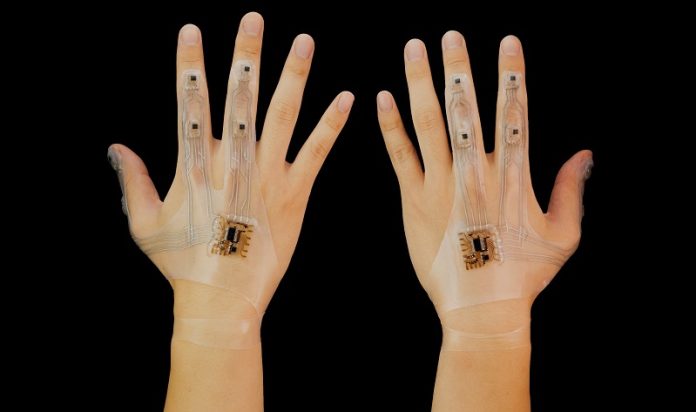
Researchers at Yokohama National University have created a new type of wearable device that combines stretchable, soft materials with rigid electronic elements.
This innovative device can accurately measure movements even when stretched up to 2.5 times its original length.
By incorporating machine learning, the device can recognize multiple types of motion with high accuracy.
The challenge of creating stretchable wearables
Wearable devices that can monitor health and measure movement are becoming more popular.
However, it is difficult to make a device that is both stretchy enough to be comfortable and rigid enough to accurately sense data.
Machine learning can enhance these devices, but integrating this technology requires wearables that are both flexible and capable of stable data processing.
The new wearable technology
The researchers developed a device that layers rigid integrated circuits on a flexible substrate. This approach improves the performance of wearable devices.
These new wearables use structures called heterogeneous-rigidity protective structures to provide stability.
These structures have three layers: a hard layer for protection, an intermediate layer, and a soft layer for flexibility.
Liquid metal paste is used for the wiring, ensuring the device remains flexible.
To test the new wearable, researchers performed three tasks: estimating the shape of knots, recognizing writing in the air, and sign-language recognition. They also tested how well the device worked when stretched.
The new device, with its heterogeneous-rigidity protective structure, performed much better under strain compared to previous devices. It continued to work even when stretched to 150% of its original length.
The device was also tested for its ability to recognize finger spelling and sign language. Current wearable devices struggle with parallel finger movements, but the new device accurately classified 91% to 98% of the letters, depending on the processing model used.
The researchers believe this technology could eventually be used to recognize American Sign Language, a highly sought-after feature.
Looking ahead, the researchers plan to develop more devices using this new technology. They aim to create stretchable hybrid electronics that combine the best properties of both rigid and elastic materials, integrated with information processing technology.
“By fusing stretchable materials with solid-state electronics, we have created novel devices that offer high computing and measurement capabilities,” said Hiroki Ota, an associate professor at Yokohama National University.
“These devices can be integrated with machine learning systems, where data accuracy and reproducibility are crucial.”
This breakthrough could lead to more comfortable and accurate wearables for health monitoring, motion measurement, and even communication through sign language, making a significant impact on various fields.



